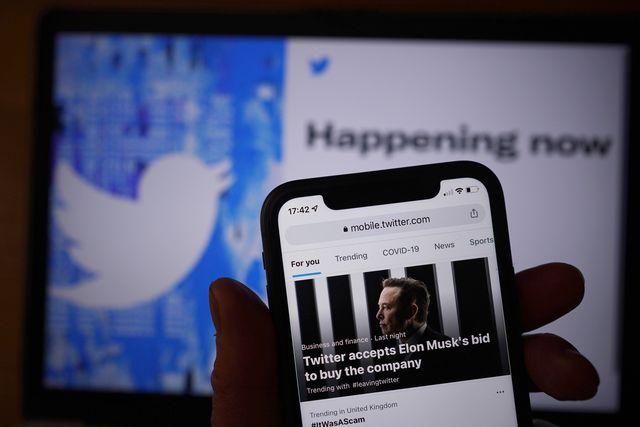
I. Introduction
In today's competitive digital landscape, it's crucial to stay ahead of the curve, and a solid understanding of Twitter ad bidding is a significant step in that direction. As we delve deeper into the world of Twitter ad bidding, you'll gain valuable insights into how to make your advertising campaigns on this platform not only effective but also cost-efficient.
A. Definition of Twitter Ad Bidding
Twitter ad bidding refers to the process of competing against other advertisers in an auction to secure ad placement on the platform. Advertisers bid on the cost they are willing to pay for specific actions, such as clicks, engagements, or impressions.
B. Importance of Twitter Ad Bidding Strategies
The way you bid on Twitter can significantly impact the performance and cost-effectiveness of your campaigns. Effective bidding strategies help you reach your target audience while maximizing your return on investment (ROI).
C. Purpose of the Outline
This article serves as a comprehensive guide to Twitter ad bidding strategies, offering insights, tips, and tactics to help advertisers navigate the complex world of Twitter advertising.
II. Understanding Twitter Ad Bidding
A. Basics of Twitter Advertising
Before diving into bidding strategies, it's crucial to grasp the fundamentals of advertising on Twitter. This includes setting up campaigns, creating compelling ad creatives, and defining campaign objectives.
B. Types of Twitter Ad Bidding
Twitter's manual bidding allows you to set bid amounts at various levels, including at the campaign, ad group, and even individual tweet levels. This granular control empowers you to tailor your bidding strategy to suit your campaign's unique objectives.
- Automatic Bidding: Twitter's automated bidding system optimizes bids for you based on your campaign goals, making it a user-friendly option for beginners.
- Manual Bidding: With manual bidding, advertisers have more control over bid amounts, allowing for precise optimization.
C. Auction System on Twitter
Twitter employs an auction system where advertisers compete for ad placements. The winner of the auction gets their ad displayed to the target audience. Understanding how this auction system works is fundamental to successful bidding.
Twitter's auction system operates in real-time, with bids competing for ad space in milliseconds. Factors like ad relevance, bid amount, and user engagement history all play a role in determining the winner of each auction. This dynamic system requires constant monitoring and optimization to achieve desired results.
III. Twitter Ad Bidding Factors
A. Ad Quality and Relevance
The quality and relevance of your ad content play a significant role in bidding. High-quality, relevant ads often achieve better results with lower bid amounts.
B. Bid Amount
Your bid amount directly affects your ad's position and visibility. It's essential to strike a balance between a competitive bid and cost-effectiveness.
C. Target Audience
Knowing your target audience and adjusting your bids accordingly can help you reach the right people at the right time.
D. Ad Placement
Twitter offers various ad placements, including timeline ads, promoted tweets, and trends. The placement you choose can impact your bidding strategy.
E. Ad Schedule
The time and day you run your ads can influence bid competition. Adjusting your bidding strategy based on when your audience is most active is crucial.
Understanding your audience's online behavior is key to effective ad scheduling. Twitter provides tools and data to help you identify the most active times for your target demographic, allowing you to allocate your budget more efficiently.
IV. Common Twitter Ad Bidding Strategies
A. Cost-Per-Click (CPC) Bidding
CPC bidding involves paying for each click on your ad. It's a popular choice for driving website traffic and measuring user engagement.
B. Cost-Per-Engagement (CPE) Bidding
CPE bidding focuses on engagements such as retweets, likes, and replies. This strategy can be effective for increasing brand interaction and visibility.
C. Cost-Per-Mile (CPM) Bidding
CPM bidding charges per thousand impressions. It's ideal for campaigns aimed at maximizing brand exposure.
D. Target Cost Bidding
Target cost bidding allows you to set a specific cost per result, helping you maintain control over your budget.
E. Maximizing Bid Strategies
Maximizing bid strategies aim to get your ads in front of the most valuable audience members, even if it means paying a premium for those clicks or engagements.
Maximizing bid strategies often involve setting high bids to ensure your ad gets the best placements and exposure. While this can increase costs, it's a viable approach for brands looking to dominate specific conversations or events.
V. Advanced Twitter Ad Bidding Tactics
A. Bid Adjustments
Bid adjustments enable you to increase or decrease your bids based on specific criteria, such as device type, location, or audience demographics.
B. Bid Caps
Setting bid caps ensures that you don't overspend on your campaigns, providing a safety net for your budget.
C. Ad Scheduling Optimization
Ad scheduling optimization involves running ads during peak engagement times to maximize their impact.
D. Retargeting Strategies
Utilizing retargeting allows you to re-engage users who have previously interacted with your brand.
E. A/B Testing Bids
A/B testing your bidding strategies can help you identify which approach yields the best results for your campaigns.
Continuous A/B testing of your bidding strategies is crucial for long-term success. By experimenting with different bid levels, you can uncover the most cost-effective approach for your unique audience and objectives.
VI. Budget Allocation and Twitter Ad Bidding
A. Setting Budgets for Campaigns
Allocating your budget effectively across campaigns is essential for maintaining control over your advertising spend.
B. Distributing Budget Across Ad Groups
Dividing your budget among different ad groups ensures that each campaign gets the necessary resources for success.
C. Monitoring and Adjusting Budgets
Continuously monitoring your campaign budgets and adjusting them as needed is crucial for achieving optimal results.
Real-time monitoring of your campaign budgets ensures you can react swiftly to changing market conditions or unexpected events. Being agile in budget allocation is a hallmark of successful Twitter ad campaigns.
VII. Measuring and Analyzing Twitter Ad Bidding Performance
A. Key Performance Metrics
Understanding metrics such as click-through rate (CTR), conversion rate, and ROI is vital for assessing the effectiveness of your bidding strategies.
B. Tracking Conversions
Implementing conversion tracking allows you to attribute specific actions to your Twitter ad campaigns.
Tracking conversions allows you to attribute specific actions, such as purchases or sign-ups, to your Twitter ad campaigns. This data is invaluable for optimizing your bidding strategies to drive desired outcomes.
C. ROI Analysis
Calculating the return on investment helps you determine the overall success and profitability of your campaigns.
ROI analysis goes beyond surface-level metrics. It helps you evaluate the profitability of your campaigns, factoring in both revenue and costs. Understanding your ROI is essential for making informed decisions about future ad spend.
VIII. Troubleshooting and Optimization
A. Identifying Common Bidding Challenges
Recognizing and addressing common bidding challenges, such as high competition or low engagement, is essential for ongoing success.
B. Strategies for Optimization
Discover strategies for optimizing your Twitter ad bidding to improve campaign performance and efficiency.
Optimization is an ongoing process. This section will provide actionable strategies for refining your bidding approach as you gather more data and insights from your Twitter ad campaigns.
C. When to Adjust Bidding Strategies
Knowing when to pivot or refine your bidding strategies based on campaign performance is key to achieving your goals.
Recognizing the right time to make adjustments to your bidding strategies is crucial for maintaining campaign efficiency. This part of the article will offer guidance on when and how to adapt your bidding tactics.
IX. Future Trends in Twitter Ad Bidding
A. AI and Machine Learning in Bidding
Explore how artificial intelligence and machine learning are expected to revolutionize bidding on Twitter.
The integration of artificial intelligence and machine learning algorithms into Twitter's bidding system is set to revolutionize how advertisers optimize their bids. Stay ahead of the curve by understanding these emerging technologies.
B. Integration with Third-Party Tools
Learn how third-party tools can enhance bidding capabilities and offer more in-depth insights.
Exploring third-party tools and platforms that complement Twitter's ad bidding capabilities can provide you with a competitive edge. Learn how to harness these tools for enhanced performance.
C. Ad Format Innovations
Stay ahead of the curve by understanding upcoming ad format innovations and their impact on bidding.
As Twitter continues to evolve, so do its ad formats. Discover the latest ad format innovations and how they might impact your bidding strategies and campaign objectives.
X. Conclusion
A. Recap of Twitter Ad Bidding Strategies
Summarize the key takeaways and strategies covered in the article.
B. The Importance of Adapting to Changing Trends
Emphasize the dynamic nature of digital advertising and the need to stay flexible in your approach.
C. Final Thoughts on Effective Twitter Ad Bidding
Offer closing remarks and encourage advertisers to apply the strategies discussed to achieve success in their Twitter advertising endeavors.
In conclusion, mastering Twitter ad bidding strategies is essential for advertisers looking to make the most of their Twitter advertising efforts. By understanding the nuances of bidding, advertisers can optimize their campaigns for maximum reach, engagement, and ROI.
As we wrap up this comprehensive guide on Twitter ad bidding strategies, remember that the digital advertising landscape is dynamic. What works today may not work tomorrow. By mastering the art of Twitter ad bidding and staying adaptable, you can position yourself for sustained success in your advertising endeavors on this powerful platform.
In conclusion, your journey into the world of Twitter ad bidding is just beginning. Armed with the knowledge and strategies outlined in this article, you have the tools to not only navigate the intricacies of Twitter advertising but also to excel and achieve your marketing goals. So, go forth, bid strategically, and watch your Twitter campaigns soar to new heights. Happy advertising!


